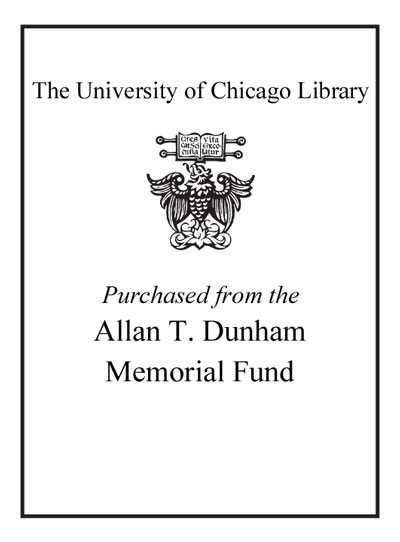Review by Choice Review
In the past two decades, a number of urban scholars have asked, What is Times Square? The responses they offer range from William R. Taylor's assertion in Inventing Times Square (CH, Jul'92) that it is the epicenter of American commercial culture, to Samuel R. Delany's argument in Time Square Red, Time Square Blue (1999) that the district is little more than a flashy representation of corporate greed. Traub (a contributing writer for The New York Times Magazine) sets aside questions about the middle-class "Disney-fication" of Times Square and reminds readers that the intersection of Broadway and 42nd Street is the social and cultural center of the US. Traub details the area's rise and fall and then quickly reviews the processes involved in its revitalization, arguing that Times Square is the best single representation of American culture. The author has little interest in criticizing the district's recent transformation, and at one point asserts that he likes the clean streets, crowds of suburban visitors, and policemen on every corner. Finding this version of Times Square appealing, Traub's love of today's sanitized spectacle overly influences his interpretation. Scholars familiar with the area's history will find Traub's interpretation engaging but not enlightening. ^BSumming Up: Recommended. General, public, and undergraduate collections. T. D. Beal SUNY College at Oneonta
Copyright American Library Association, used with permission.
Review by Booklist Review
Traub has made a career out of writing about New York and its institutions. He has the right: he lives and breathes the city, and his prose tumbles out sparkling and effortless. His history of Times Square--its name was changed from Longacre Square in the spring of 1904 for the newspaper headquartered there--is a vivid and remarkably nonjudgmental tale. The iron law of Times Square, he writes, is real estate turned to its most profitable use, and he carries that idea from rooftop gardens, vaudeville, and the magical year of 1927 through the speakeasies and nightclubs of the 1930s to the sinkhole of the 1970s and the square's current incarnation as the site of a family carnival. He doesn't miss a character--what made Times Square happen were personalities from reporter Walter Winchell and nightclub queen Texas Guinan to designer Tiboralman and the real estate Dursts. He segues smoothly from the assignations of boxer Primo Carnera at the Forrest Hotel to the effect of crowds on MTV's Total Request Live. He pauses in his archaeological reconstruction long enough to marvel at the length and depth of Irving Berlin's career and to admire the Ferris wheel inside the Toys R Us store. A fabulous read that quite nearly captures the gorgeous disarray and epic higgedly piggedly of the world's gathering place. For other slices of New York life, see Donna Seaman's Read-alike column, Walkabout, New York Style, in the February 1, 2004, Booklist. --GraceAnne DeCandido Copyright 2004 Booklist
From Booklist, Copyright (c) American Library Association. Used with permission.
Review by Publisher's Weekly Review
The first part of Traub's learned cultural history focuses on Times Square (originally Longacre Square before it was renamed in 1904) when it was the center of New York's-and the nation's-entertainment industry. Evoking the Runyonesque worlds of vaudeville, burlesque, speakeasies, gangsters and molls, the author provides lots of glamorous information about old Times Square and its most recognizable invention-oversized electronic signs or "spectaculars." Part two opens in the 1970s after Hollywood, suburbanization and television had marginalized live entertainment and its capital, turning Times Square into a haven for drug dealers and prostitutes, "a disease to be cured." This section, on the rebirth of Times Square, is particularly valuable for showing how private interests and the public sector joined forces to create a capital for corporatized fun. In part three, some readers may become impatient with Traub's tortured indecision about whether to enjoy this weird, overblown world, as his 11-year-old son does, or to decry it as a plot by global capitalism, as well as with his tendency to obsessively analyze the place (he visits Madame Tussaud's Wax Museum with a professor who's "a deconstructionist, or perhaps a postdeconstructionist"). Despite the sometimes overly intellectual approach, this book should appeal to those looking for some of the joy and excitement that even the new "sanitized" Times Square has to offer. (Mar. 23) FYI: Traub is a contributor to the New York Times Magazine and the New Yorker. (c) Copyright PWxyz, LLC. All rights reserved
(c) Copyright PWxyz, LLC. All rights reserved
Review by Library Journal Review
Traub (contributing writer, the New York Times Magazine; Too Good To Be True: The Outlandish Story of Wedtech) explores the rise, fall, and second rise of Times Square, just in time for the iconic neighborhood's April centenary. When New York City expanded uptown, and the subway system opened in 1904, Times Square became a storied destination for theater and amusements-or what Traub calls the city's "agora," a gathering place for news and celebration. But by the 1970s, the area had turned squalid, many of its great venues shuttered or turned into peep houses. Recently redeveloped, Times Square has reemerged as a global corporate media center. In eloquently detailed prose, enlivened by stories of myriad Broadway personalities, Traub's narrative reviews the area's history and poses complex questions about the ownership of the city, the role of nostalgia in urban development, and, ultimately, the correct way to conduct life in the 21st century. Traub is a fair, careful reporter and an engaging writer. The book will appeal to thoughtful readers interested in theater lore as well as in New York City history.-Elaine Machleder, Bronx, NY (c) Copyright 2010. Library Journals LLC, a wholly owned subsidiary of Media Source, Inc. No redistribution permitted.
(c) Copyright Library Journals LLC, a wholly owned subsidiary of Media Source, Inc. No redistribution permitted.
Review by Choice Review
Review by Booklist Review
Review by Publisher's Weekly Review
Review by Library Journal Review


